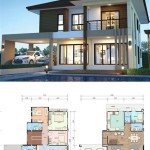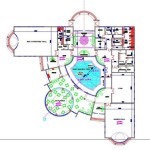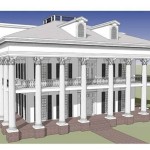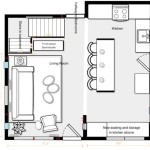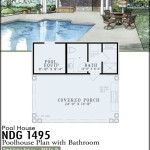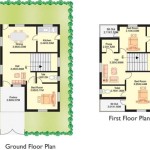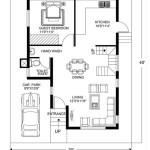Beach House Floor Plans on Stilts: Elevating Coastal Living
Coastal living often conjures images of sandy beaches, gentle waves, and breathtaking ocean views. For homeowners seeking to maximize these elements while mitigating flood risks and enhancing privacy, beach houses on stilts offer an ideal solution. This architectural style, prevalent in coastal areas prone to flooding and high tides, elevates the main living space above ground level, providing numerous advantages and design opportunities.
Key Advantages of Stilt Houses
Elevated construction provides a myriad of benefits, making stilt houses a practical and attractive option for coastal properties:
*Flood Protection:
The primary advantage of stilt houses lies in their inherent flood resistance. By raising the living space above anticipated flood levels, these homes minimize the risk of water damage during storms and high tides. *Preserved Views:
Elevating the house provides unobstructed panoramic views of the surrounding landscape, including the ocean, beach, and surrounding natural scenery. *Improved Ventilation:
The open space beneath the house allows for natural ventilation, reducing humidity and promoting airflow, essential in warm, humid coastal climates. *Minimized Environmental Impact:
Stilt houses minimize disruption to the natural landscape and dune systems, preserving the delicate coastal ecosystem. *Under-House Storage and Parking:
The space beneath the house can be utilized for covered parking, storage of beach equipment, or even outdoor living areas.Design Considerations for Stilt House Floor Plans
Designing a beach house on stilts requires careful consideration of several factors to ensure structural integrity, functionality, and aesthetic appeal:
*Stilt Material and Construction:
Stilts can be constructed from various materials, including timber, concrete, or steel. The choice of material should be based on local building codes, environmental conditions, and aesthetic preferences. Proper engineering and construction are crucial for ensuring the stability and longevity of the structure. *Staircase and Elevator Access:
Safe and convenient access to the elevated living space is paramount. Well-designed staircases, ramps, or even elevators should be incorporated to facilitate easy movement between ground level and the main living area. *Under-House Space Utilization:
The area beneath the house presents versatile opportunities. It can be transformed into a covered parking area, a storage space for watercraft and beach gear, or an outdoor living space with seating and entertainment areas. *Coastal Climate Considerations:
Stilt houses should be designed to withstand the harsh conditions of coastal environments, including strong winds, salt spray, and humidity. Durable materials and proper ventilation are essential for longevity.Floor Plan Options for Stilt Houses
The floor plan of a stilt house can be customized to suit individual needs and preferences. Here are some common floor plan layouts:
*Open-Concept Living:
Open-concept floor plans are popular in beach houses, creating a spacious and airy feel. Combining the living, dining, and kitchen areas maximizes the sense of space and facilitates entertaining. *Multi-Level Designs:
Stilt houses can incorporate multiple levels, with the main living area on the upper floor to maximize views, and bedrooms or additional living spaces on lower floors. *Wrap-Around Decks and Balconies:
Maximizing outdoor living is a hallmark of beach house design. Wrap-around decks and balconies provide ample space for relaxation, dining, and enjoying the coastal scenery. *Incorporated Guest Suites:
Including separate guest suites, either on the main level or a lower level, provides privacy for both homeowners and guests.Building Codes and Regulations
Building a stilt house requires adherence to specific building codes and regulations designed to ensure structural integrity and safety in coastal areas. These regulations often dictate the minimum height of the stilts, the materials that can be used, and other construction specifications.
*Local Building Codes:
Homeowners must consult local building authorities to understand specific regulations governing stilt house construction in their area. *Coastal Zone Management Regulations:
Coastal areas often have specific zoning regulations designed to protect the environment and manage development. *Flood Insurance Requirements:
Securing flood insurance is crucial for stilt houses, and understanding the requirements and regulations related to flood insurance is essential.Maintenance and Durability
Maintaining a stilt house requires specific considerations to ensure its longevity in the harsh coastal environment.
*Regular Inspections:
Regular inspections of the stilts, foundations, and structural components are crucial for identifying and addressing any signs of damage or deterioration. *Corrosion Protection:
Protecting metal components from corrosion due to salt spray is essential. Regular cleaning and application of protective coatings can help prevent rust and corrosion. *Pest Control:
The open space beneath the house can attract pests. Implementing pest control measures can prevent infestations and protect the structural integrity of the house.Sustainability and Eco-Friendly Design
Stilt houses offer the opportunity to incorporate sustainable and eco-friendly design principles.
*Use of Sustainable Materials:
Choosing sustainably sourced building materials, such as reclaimed wood or bamboo, can reduce the environmental footprint of the construction. *Energy-Efficient Design:
Incorporating energy-efficient features, such as solar panels, rainwater harvesting systems, and proper insulation, can reduce energy consumption and minimize environmental impact. *Landscaping Considerations:
Native landscaping can help stabilize the soil around the house, prevent erosion, and enhance the natural beauty of the surroundings.Beach house floor plans on stilts offer a unique blend of practicality, aesthetics, and environmental consciousness. By carefully considering design elements, building codes, and maintenance requirements, homeowners can create a coastal haven that maximizes the benefits of elevated living while minimizing environmental impact. Understanding the intricacies of stilt house construction is essential for anyone considering this architectural style for their coastal dream home.

Plan 44188td Modern 2 Bed Stilt House On Stilts Beach Plans Design

Coastal Stilt House Plan With Elevator And Second Level Living Space 765044twn Architectural Designs Plans

Stilt House Plan With Decks And Charm 3928

Plan 44026td Classic Florida Er Beach House Plans Coastal Floor

2 Family House Plan On Stilts 62573dj Architectural Designs Plans

Beach Stilt House For Tiny Living 44189td Architectural Designs Plans

Plan 765017twn Rectangular Beach Home With Vaulted Dining And Living Room House Floor Plans Coastal Homes

Aaron S Beach House Coastal Plans From Home

A Place In The Sun Coastal House Plans From Home

House Design Plan Ch539 3 Stilt Plans Carriage On Stilts

